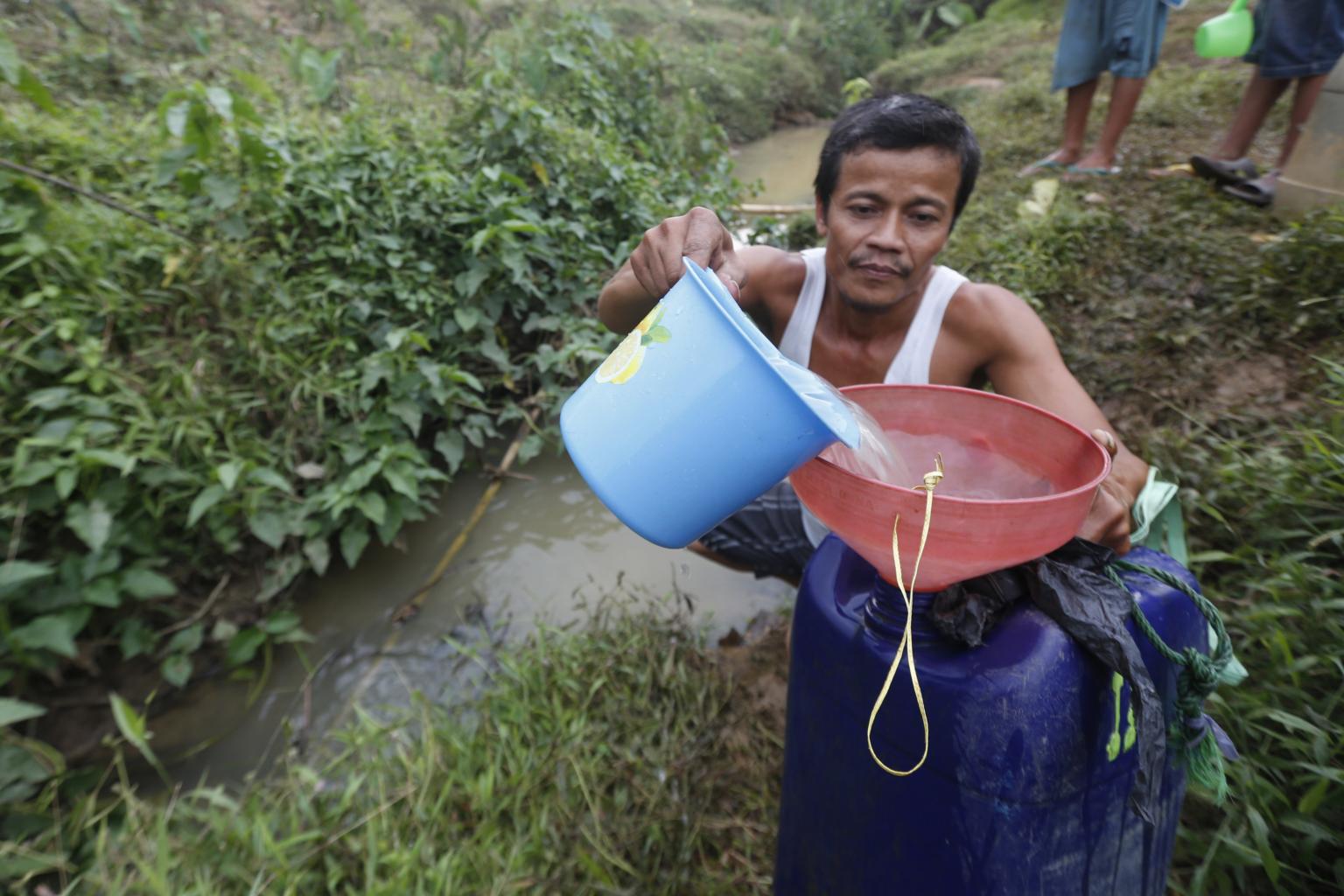Worsening drought, clean water scarcity affect millions in Indonesia
Sign up now: Get insights on Asia's fast-moving developments

A resident fills a tank with dirty water from a river at Galih Manah village in Cibarusah, West Java, Indonesia.
PHOTO: EPA
Follow topic:
JAKARTA (THE JAKARTA POST/ASIA NEWS NETWORK) - Millions of people across Indonesia are facing failed harvests and a shortage of clean water as a result of worsening drought conditions.
The Meteorology, Climatology and Geophysics Agency (BMKG) has predicted that this year's dry season may last until September.
In Central Java, it is estimated that 1,235 villages in 266 districts will endure clean-water shortages during the dry season, according to the Central Java Disaster Mitigation Agency (BPBD).
At least three reservoirs in the province have dried up and six others have very low water levels, cutting supplies of water for irrigation and clean water for domestic use.
Water volumes in the reservoirs have steadily declined since the dry season arrived in the province in July.
The dried-up reservoirs are in Gebyar and Botok in Sragen regency, as well as Uling in Wonogiri regency.
"The six reservoirs that have very low water levels are in Kembangan and Brambang in Sragen, Krisak in Wonogiri, Cacaban in Tegal, Gunungrowo in Pati as well as Lodan in Rembang," Central Java Water Resources Management (PSDA) Agency head Prasetyo Budhie Yuwono said on Monday (Aug 28).
However, the provincial administration has downplayed the situation, claiming that the overall water volume of all the reservoirs in the province was still sufficient.
The administration previously expected a minimum water volume of 1.0 billion cubic meters in all 41 reservoirs in the province during the dry season. As of Monday, the volume was 1.2 billion cubic meters, said Prasetyo.
Nuswantoro SP, the secretary of the Central Java Plantation, Agriculture and Dissemination Coordination Agency, said the impact of the dry season in August was still manageable.
"We've received reports of drought from Temanggung, Demak and Tegal regencies. A total area of 13 hectares suffered light drought conditions while a moderate drought is reported to have hit 39 ha of and severe drought in 14 ha," he said, adding that farmers had reported failed harvests. In Tegal, for example, 10 ha of rice failed.
BPBD Central Java has earmarked Rp 600 million (S$60,876) for the distribution of clean water to 46 villages in 22 districts.
In East Nusa Tenggara (NTT), acting Sabu Raijua regent Nikodemi Rihi Heke has issued a decree to cope with the "drought emergency" in six districts.
"The six districts are Hawu Mehara, Raijua, West Sabu, Sabu Liae, Central Sabu and East Sabu," BPBD Sabu Raijua chief Pither Mara Rohi told reporters in Kupang.
Pither said that based on agency monitoring, almost all districts in the regencies had suffered from water scarcity and drought since July.
The agency has started to distribute clean water to residents in 63 villages in six districts, using 335 water tankers.
However, Pither said supplies were still inadequate to compensate for the drought.
On average, one village would only get supplies from five to six water tankers per day, each only sufficient to cover the needs of 10 to 12 families.
Therefore, for a long-term solution, the Sabu Raijua administration plans to build embung (artificial lakes) in every village in the regency.
"There are currently two big embung in Sabu Raijua, which can only supply a few villages around them," Pither said.
Drought and water scarcity are also reported in other areas, such as Karawang, Cianjur and Sukabumi in West Java; Bantul in Yogyakarta; and Bima in West Nusa Tenggara (NTB).

